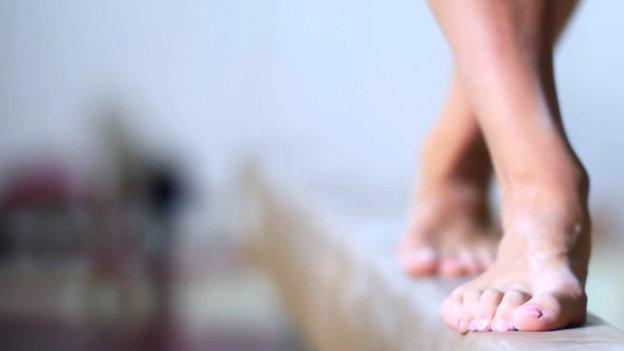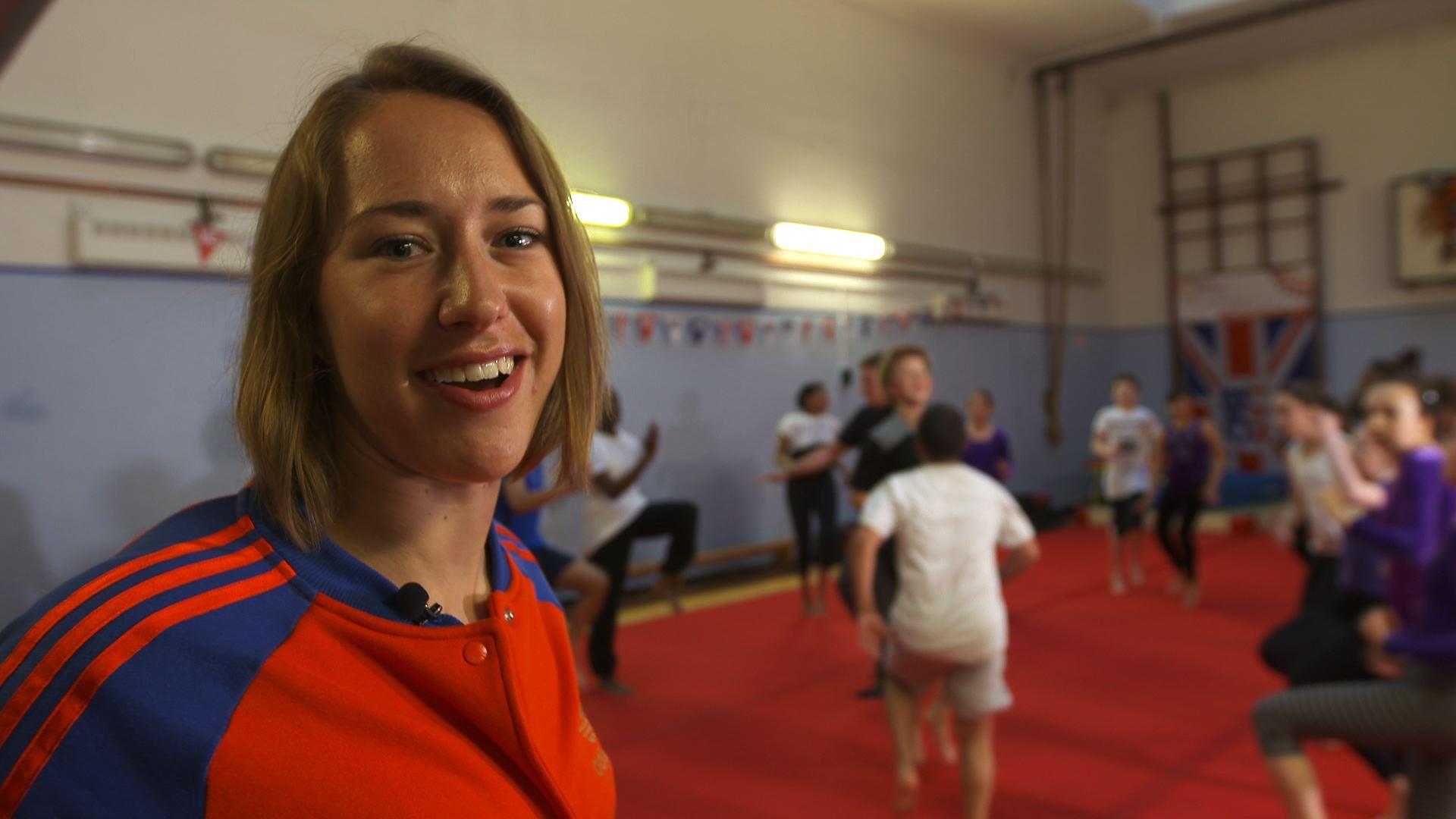Get Inspired: Gymnastics (artistic)
- Published
Take a look at our Gymnastics activity page to get a full description of all the different types of gymnastics to choose from.
Baker inspire
Gymnastics is an event which sees the ancient and modern Olympics collide.
One of the world's oldest sports, it featured prominently in the ancient Games and has been part of every modern Olympics since their inception in 1896.
Olga Korbut's spectacular uneven bars routine in 1972 and Nadia Comaneci's perfect 10 in Montreal four years later are tightly woven into the fabric of Olympic history.
For Great Britain the sport has traditionally offered little cause for celebration, but the 2008 Olympics marked a watershed. Louis Smith's bronze in the pommel horse was the country's first medal since the women's team finished third in 1928.
Smith went on to claim pommel horse silver at London 2012 as the British men's team took bronze, alongside uneven bars bronze medallist Beth Tweddle.
Why is it good for you?
Gymnastics requires strength, mobility, endurance, flexibility, body control and co-ordination.
The high level of physical fitness needed to excel helps encourage a healthy lifestyle, including regular physical activity and eating a well-balanced diet.
The wide range of tumbles, flips, vaults and swings involved works every muscle in the body and burns approximately 315 calories per hour.
As a weight-bearing activity, gymnastics can help athletes develop strong, healthy bones and joints. This reduces the risk of developing osteoporosis later on in life.
Get involved
Gymnastics is a breathtaking sport featuring a range of disciplines such as artistic, trampoline, acrobatics, aerobics and tumbling.
It is enjoyed by an estimated four million people in the United Kingdom.
There are more than 1,600 gymnastic clubs in the country and you can find the one closest to you by using the British Gymnastics club finder., external
Artistic gymnastics explained (Part one)
You only need to buy your own sports kit as the different apparatus and equipment can be found in clubs.
An extensive range of training programmes for people of all abilities and ages are available in sport centres, gyms, schools, universities and colleges.
British Gymnastics' GymFusion scheme, external has seen over 2,000 performers take part in the non-competitive, show style festivals, with 11 events set to set to take place across the UK in the future.
Contact your local British Gymnastics development officer, external to discover how you can get started, with the GymMark scheme, external ensuring the highest standards are adhered to throughout the UK.
Further information can be found on the English Gymnastics,, externalWelsh Gymnastics,, externalScottish Gymnastics, external and Gymnastics Northern Ireland, external websites.
History
The ancient Greeks were the first to popularise gymnastics among the sports staged at their initial incarnation of the Olympic Games. Modern artistic gymnastics can trace its roots to Germany, where more modern styles and forms of apparatus were first codified.
The sport's world governing body was founded in 1881 and artistic gymnastics has formed a part of the Olympic programme ever since the first Games of 1896.
Since those first Games in Athens the sport has undergone a process of evolution. It began as a purely male pursuit, with female participants not taking part until 1928.
Some of the disciplines were also different during those early years - rope climbing formed part of every Olympics until 1932. Tumbling, won by Rowland 'Flip' Wolfe of the USA, also featured in 1932. Sadly for Flip that was its one and only Olympic appearance.
In 1936, the individual apparatus events began to resemble those we see at the Games today. Competitors in Berlin took part in free exercises (floor exercises), side horse (pommel horse), rings, parallel bars, horizontal bar and long horse (vault).
The four-apparatus competitive programme for women (vault, uneven bars, balance beam and floor) was introduced at the 1952 Games.
Historically, Russia, China, Japan and the US have been the powerhouses on the world stage.
More on the IOC website, external
Are you inspired to try Artistic Gymnastics? Or maybe you are an enthusiast player already? Get in touch and tell us your experience of the activity by tweeting us on @bbcgetinspired, external or email us on getinspired@bbc.co.uk., external
See our full list of activity guides for more inspiration.
- Published21 September 2018

- Published15 May 2014

- Published6 December 2013
